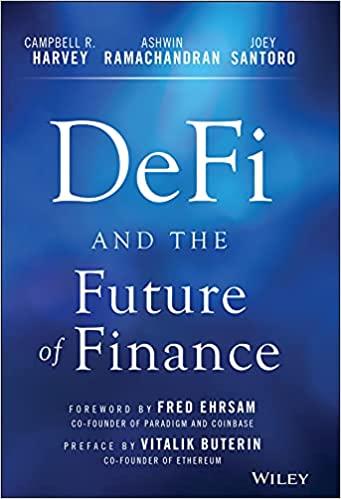Question
The data set Computer Exercise 3.xlsx contains the monthly ex-dividend net return (i.e. proportionate change in prices) that could have be obtained by buying a
The data set Computer Exercise 3.xlsx contains the monthly ex-dividend net return (i.e. proportionate change in prices) that could have be obtained by buying a companys stock on July 31, 2008 and selling it on August 29, 2008 for (almost) all stocks traded on the NYSE, NYSE MKT, NASDAQ, Arca, and other exchanges.
From the data provided, select/generate a random sample of 200 companies
Generate a series with the same number of observations as the return series. Each observation of the new series corresponds to the outcome of a Bernoulli random variable, Y. The outcome is 1 if the net stock return in the same month is larger than or equal to 0.05 and zero otherwise.
Based on your random sample of Bernoulli variables, compute the sample average/sample mean of the outcomes in 2. Is this value an unbiased estimate for the populations probability of success (i.e. for the probability that returns are larger than or equal to 0.05)? Explain!
Compute an unbiased estimate of the population variance of the Bernoulli random variable Y. Compare this value to the sample variance (i.e. the descriptive/summary statistic discussed in Appendix A). Are the two values different and if yes - how do they differ?
Now consider the observations on net returns. Make a histogram that summarizes the distribution of returns in your sample by counting the number of observations in each bin (i.e. frequency). Let Excel automatically generate the bins.
Make a histogram that summarizes the distribution of returns in your sample by counting the number of observations in each bin (i.e. frequency). Plot the distribution in 22 bins of equal size.
For the same 22 bins as in 6., make a histogram that summarizes the distribution of returns in your sample by reporting the proportion of outcomes that fall into each bin (i.e. proportion).
Based on your random sample of net returns, which is assumed to represent the population well, would you be inclined to conclude that returns are normally distributed? Explain!
Step by Step Solution
There are 3 Steps involved in it
Step: 1

Get Instant Access to Expert-Tailored Solutions
See step-by-step solutions with expert insights and AI powered tools for academic success
Step: 2

Step: 3

Ace Your Homework with AI
Get the answers you need in no time with our AI-driven, step-by-step assistance
Get Started


